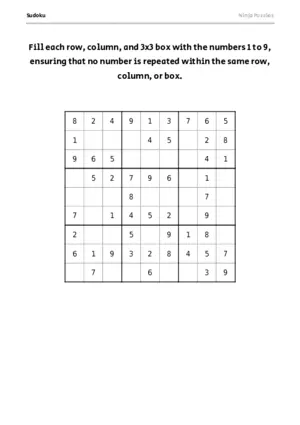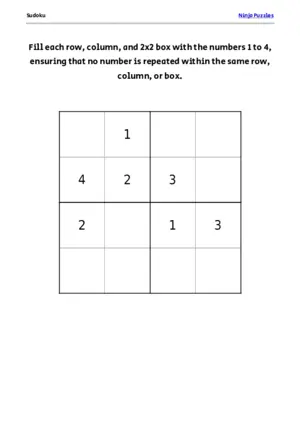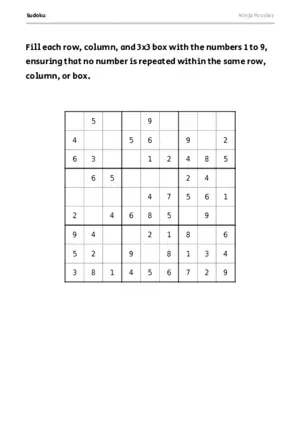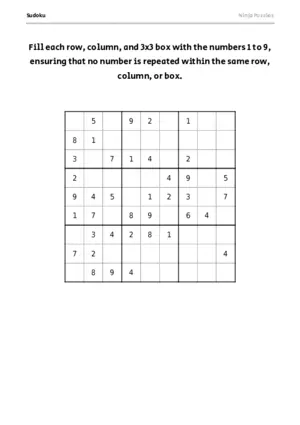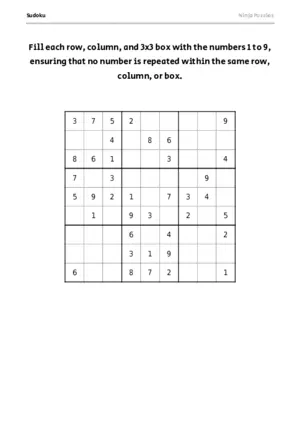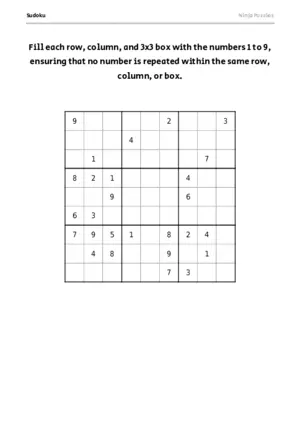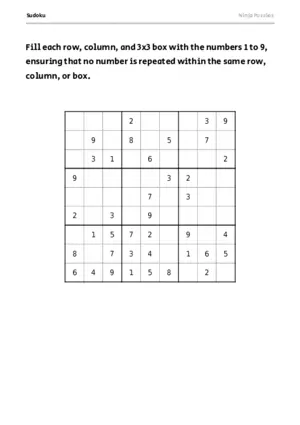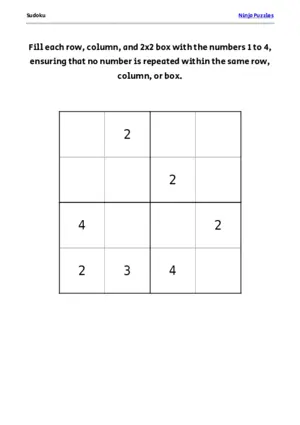Sudoku: Naked Pairs and Triples Strategy and Techniques
The Naked Pairs and Triples strategy is indeed a powerful technique in Sudoku puzzle solving. It allows you to eliminate candidate numbers by identifying squares within a unit that share the same two or three candidates.
Here’s how the Naked Pairs and Triples strategy works:
- Analyze the unit: Choose a row, column, or box to focus on.
- Identify candidate numbers: Determine the possible numbers for each empty square in the chosen unit.
- Look for Naked Pairs or Triples: Find two or three squares that have the same two or three candidates respectively, with no other candidates apart from the shared ones.
- Eliminate candidates: Remove the shared candidates from other squares in the unit since those numbers must be placed in the identified squares.
- Update the puzzle: Reassess the puzzle and repeat these steps for other units.
By applying this strategy consistently, you can progressively reduce candidate possibilities and uncover hidden relationships between squares.
It’s important to note that Naked Pairs and Triples can occur within a single unit or across different units. The more you practice spotting these patterns, the better you’ll become at making deductions and leveraging them to solve Sudoku puzzles efficiently.
Remember to combine this strategy with other techniques like Singleton Technique and advanced strategies to further enhance your solving abilities. With time and experience, you’ll develop a keen eye for recognizing these patterns and utilizing them effectively to solve Sudoku puzzles with ease.
Sudoku Solver
If you get really stuck then we have an online Sudoku Solver, and a Sudoku Mini Solver to help you solve the most challenging Sudoku puzzles.
Advanced Sudoku Strategies
- Singleton Technique: This strategy involves identifying squares that have only one possible candidate number based on the numbers already present in the row, column, and box.
- Naked Pairs and Triples: When two or three squares in a unit (row, column, or box) have the same two or three candidate numbers, those numbers can be eliminated as possibilities from other squares in the unit.
- Hidden Pairs and Triples: This strategy focuses on identifying two or three candidate numbers that only appear in the same two or three squares within a unit. These numbers can then be eliminated as possibilities from other squares in the unit.
- Sudoku X-Wing: Sudoku X-Wing involves finding two rows or two columns where the same number can only occur in the same two positions. By eliminating that number as a possibility in the corresponding rows or columns, you can make further deductions.
- Swordfish: Similar to Sudoku X-Wing, Swordfish strategy expands the concept to three rows or three columns. It involves finding three rows or three columns where the same number can only occur in the same three positions, allowing for further eliminations.
- Sudoku Y-Wing: Sudoku Y-Wing is an advanced strategy that involves three cells and three numbers. By utilizing a specific pattern of candidate numbers, you can make deductions that lead to solving other squares.
- Sudoku XYZ-Wing: XYZ-Wing involves three cells and three numbers, with each number belonging to a different candidate list. It allows for deductions by creating chains of eliminations based on the relationships between the three numbers.
- Coloring: This strategy involves assigning colors (usually two) to candidates and using the relationships between these colors to make deductions.
- Backtracking: Backtracking is a brute-force technique that involves making educated guesses and trying different possibilities until a contradiction is reached or the puzzle is solved.

